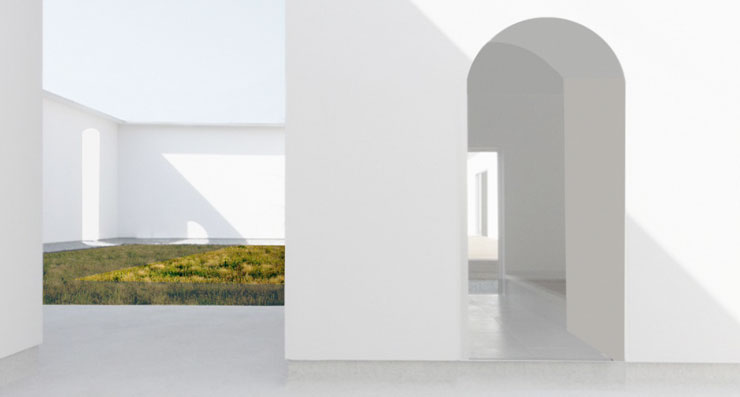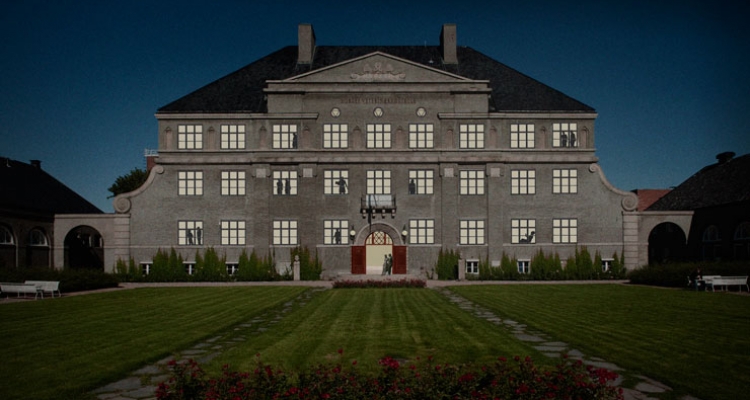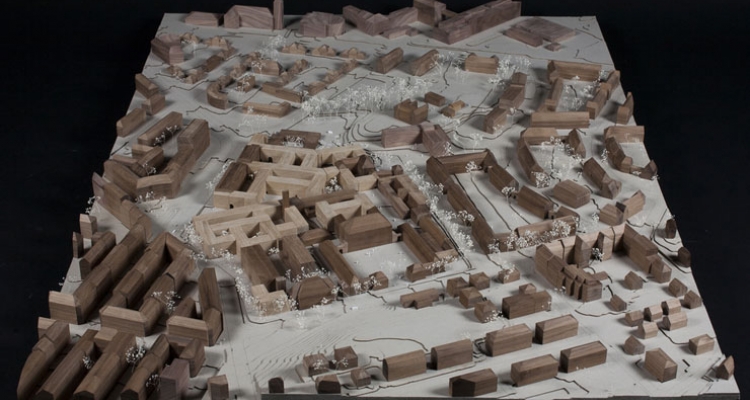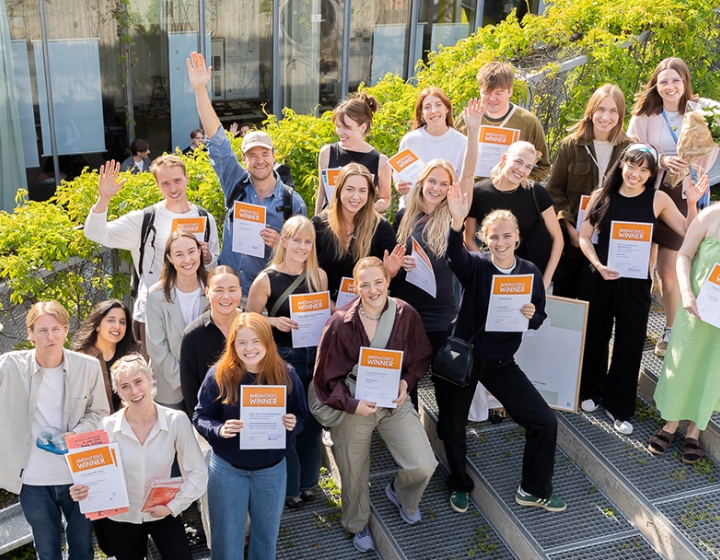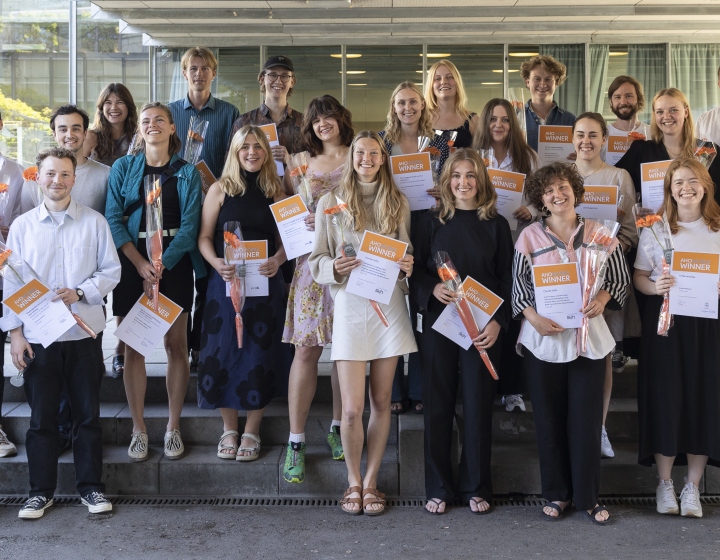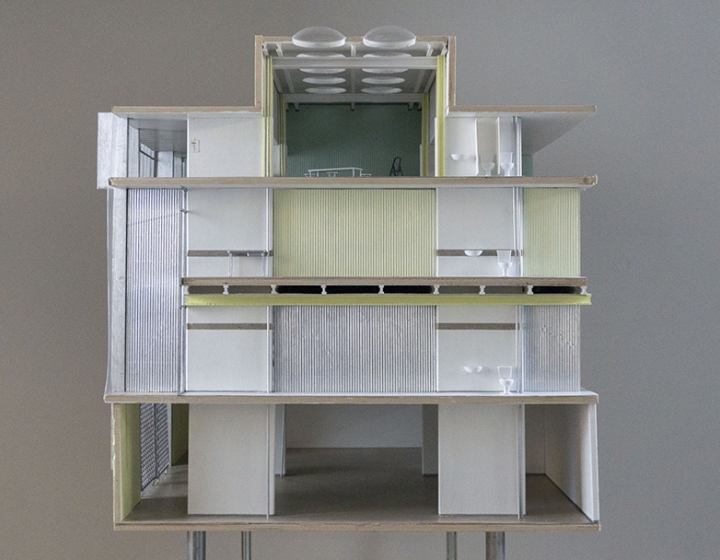AHO students win European architecture contest
Enya Aamo Aspen and Rikke Christine Nyruds has won one of the top prizes in the international student competition European Architectural Medals for the Best Diploma Projects, for their project 'Lost & Found - Housing at Veterinærhøgskolen'.
100 diploma projects from 22 European countries participated in the contest. 30 were shortlisted by the Jury, which then decided on four winning projects and Honorable mentions.
The annual competition between the best architecture diploma projects in Europe is arranged by Architect Council of Europe (ACE), European Association of Architectural Education (EAAE) and Ion Mincu, University of Architecture and Urbanism i Buchuresti.
The AHO students Enya Aamo Aspen and Rikke Christine Nyrud were awarded one fo the top four prizes – ACE Prize for Societal Impact – for the project entitled "Lost & Found - Housing at Veterinærhøgskolen" (Norwegian School of Veterinary Science)
The AHO project deals with city growth, preservation and dwelling qualities, a highly relevant topic for many cities. The building mass in Norway is renewed at a mere 1% per year, which means that 70% of the buildings we occupy in 2025 are already built. The future city development will have to take place within the existing city fabric and through transformation of existing buildings.
How can we achieve increased density and quality in residential areas? How to combine development with cultural heritage? How can adaptive re-use give added value?
By developing a method of extensive mapping and careful reading of the existing buildings and outdoor spaces, we find concepts that interpreter the identity of the place and strengthen existing qualities, resulting in a distinct, new neighbourhood with values related to history, atmosphere, materiality, structure and spatial sequences.
The former enclave is connected to the surrounding areas through four main squares and various public programs. New volumes are added to the preserved buildings, making up a network of enclosed gardens/courtyards, a semi-public space functioning both as street and backyard. These are connected by passages, adjacent to the stairwells located in the intersection of new and old.
Jury comments:
The theme of sensitive reuse is at the core of Europe’s problems of urban development of the future. This project poses the problem of achieving high density while achieving high quality and regenerating urban areas without losing the cultural heritage. The project begins by analysing an urban neighbourhood and developing a solution that tackles all aspects of design. Beginning with a careful analysis of the area, it develops from master plan all the way to detailed construction details, presenting us with a finished and sensitive complete product. The jury felt that this project could definitely be held as an example of good practice and responsible intervention.
The annual competition between the best architecture diploma projects in Europe is arranged by Architect Council of Europe (ACE), European Association of Architectural Education (EAAE) and Ion Mincu, University of Architecture and Urbanism i Buchuresti.
The AHO students Enya Aamo Aspen and Rikke Christine Nyrud were awarded one fo the top four prizes – ACE Prize for Societal Impact – for the project entitled "Lost & Found - Housing at Veterinærhøgskolen" (Norwegian School of Veterinary Science)
The AHO project deals with city growth, preservation and dwelling qualities, a highly relevant topic for many cities. The building mass in Norway is renewed at a mere 1% per year, which means that 70% of the buildings we occupy in 2025 are already built. The future city development will have to take place within the existing city fabric and through transformation of existing buildings.
How can we achieve increased density and quality in residential areas? How to combine development with cultural heritage? How can adaptive re-use give added value?
The project investigates these questions by using the area of the Veterinary School in Oslo as a case. The institution is moving in 2019, leaving 67 hectares vacant, located in a central and very attractive area of Oslo.
By developing a method of extensive mapping and careful reading of the existing buildings and outdoor spaces, we find concepts that interpreter the identity of the place and strengthen existing qualities, resulting in a distinct, new neighbourhood with values related to history, atmosphere, materiality, structure and spatial sequences.
The former enclave is connected to the surrounding areas through four main squares and various public programs. New volumes are added to the preserved buildings, making up a network of enclosed gardens/courtyards, a semi-public space functioning both as street and backyard. These are connected by passages, adjacent to the stairwells located in the intersection of new and old.
Jury comments:
The theme of sensitive reuse is at the core of Europe’s problems of urban development of the future. This project poses the problem of achieving high density while achieving high quality and regenerating urban areas without losing the cultural heritage. The project begins by analysing an urban neighbourhood and developing a solution that tackles all aspects of design. Beginning with a careful analysis of the area, it develops from master plan all the way to detailed construction details, presenting us with a finished and sensitive complete product. The jury felt that this project could definitely be held as an example of good practice and responsible intervention.

